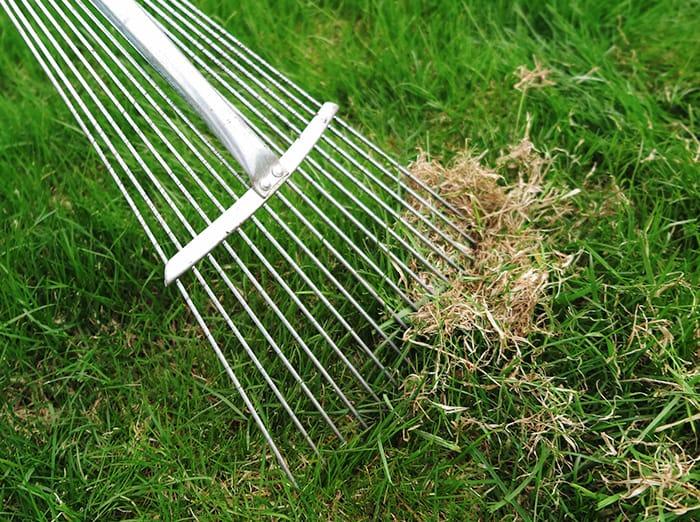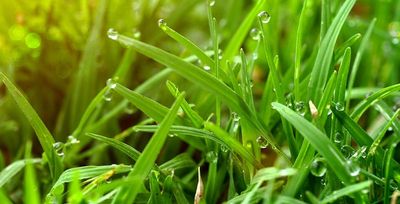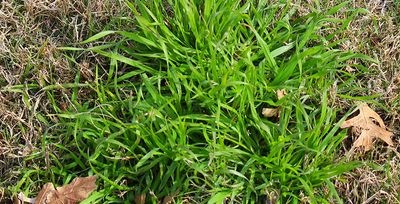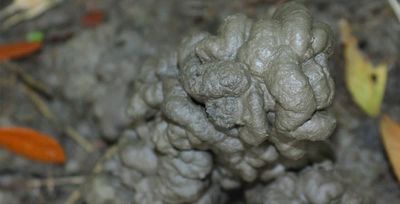In Tulsa, having a well-maintained lawn goes beyond just appearance. Keeping a lawn healthy and vibrant throughout the year can be a real challenge, and it's something that many homeowners work hard to achieve. Your lawn is where your family spends time, and you want it to look its best, right? Unfortunately, a sneaky issue can cause trouble for your lawn and keep it from looking its best. It's called thatch. Today, we'll define what thatch is, explain the causes of thatch buildup, and share what you can do about it. You'll find great tips and tricks and some quick details about how your Nutri-Green Lawn Care team can help. We are your local area lawn care experts.

What exactly is thatch?
The simple answer is that thatch is a layer of dead grass, roots, and other organic material just above the soil. It has intertwining fibers that cover the soil like a spongy mat. A small amount of this material is normal. It acts as an organic blanket that holds warmth on a cold desert night. It also helps to maintain essential moisture and keep soil temperatures stable. You want to have some thatch; it is beneficial for your lawn. But you want to avoid too much of a good thing, and thatch can get out of hand in Tulsa.
Thatch buildup is bad
Imagine cutting a sponge and placing it around the stem of a potted plant. How easy would it be to water that plant? Not easy at all, right? The sponge would soak up all the water before it gets to the soil.
One way thatch causes trouble for your lawn is that it soaks up water and prevents it from reaching the roots of your turfgrass.
What causes thatch buildup?
Tulsa lawns, especially those with clay, are prone to thatch buildup because organic materials don't break down quickly. Some common lawn practices can also encourage thatch buildup.
- Shallow watering
Giving a lawn a small drink isn't enough for most yards, particularly on properties with lots of clay. Doing this will encourage shallow root growth and add dead roots to the thatch layer. - Compacted soil
When soil is compacted, water sits on the surface, inspiring the decay of organic matter. Nutrients, oxygen, and water can't get to the roots, further increasing the decay. - Too much Nitrogen
Fertilizers are extremely important for healthy grass growth, but high-nitrogen fertilizers can encourage top growth and fail to support strong root development. These conditions will inspire thatch buildup. - Improper mowing
Your mowing technique is essential. Leaving too many clippings on your lawn without giving them time to break down can lead to thatch buildup. Grass clippings are beneficial, but the clippings need the ability to break down and become food for the soil. Thatch prevents this from happening, and the clippings become part of the problem.
Does my lawn have thatch buildup?
There are a few ways to check your lawn to see if you have a thatch issue. Here's what you're looking for:
- Spongy feel
Does your turf feel spongy when you walk on it? If so, that spongy feeling is likely due to a thick thatch layer. - Water runoff
Do you notice water pooling or running off when you water your lawn? If so, this is an indication that a barrier is keeping the water from soaking in. That barrier is almost certainly thatch. - Brown grass
Is your lawn turning brown even after you water it? While there are many reasons why brown grass can occur, this is a sign that something is blocking the water from reaching the roots. - Thin grass
Is the grass in your lawn thinning out, particularly during the growing season? The reason for this might be that thatch is blocking moisture and nutrients.
Is there a way to prevent thatch buildup?
Yes. There are a few ways to prevent a thatch problem if you don't already have one. Here are a few simple tips:
- When you water your lawn, water deeply, making sure the water soaks through the thatch and strengthens the grass's roots.
- Rake your lawn to remove thatch.
- Choose a fertilizer that is properly balanced. You want to provide your soil with only the nutrients it needs. It is helpful to do a soil test to determine the proper mixture.
- Aerate your lawn to address compaction and allow water, oxygen, and nutrients to pass through the thatch layer.
What do you do if you already have a heavy thatch problem? If you're seeing signs of heavy thatch buildup, DIY measures might fall short. Contact your Nutri-Green Lawn Care team for assistance.
How Nutri-Green Lawn Care can help
When thatch builds up, we have the solution. Here are a few ways we will take care of thatch problems for you:
- Our aeration service creates pathways for water, oxygen, and nutrients and loosens your soil, promoting healthy grass growth.
- Our fertilizer treatments can be customized to meet the specific needs of your lawn.
- When you get year-round lawn care service, we monitor the health of your lawn and provide ongoing care.
- We share our knowledge with you so you can take the steps needed to get the most out of your lawn care service.
Are you ready to have a healthy lawn?
If your lawn isn't as green and vibrant as you would like it to be, you might have a thatch problem—but even if you don't have a thatch problem, your Nutri-Green Lawn Care team can help you keep your lawn looking as beautiful as possible, all year. It takes dedicated effort, hard work, and know-how. Contact our team today and start to enjoy the best lawn you've ever had.

Testimonials



News, Blogs & Articles
Our Blog













